If variety is the spice of life, then you have plenty of good culinary reasons to reach into your kitchen spice cabinet on a frequent basis. Here’s another one: Many spices provide certain health-giving benefits. In fact, sprinkling on the spice can be pleasing for your palate and a prescription for well-being.
Nothing stimulates the appetite like the aroma of sweet and savory spices. As an added bonus, your favorite seasonings may also rev up your immune system, increase your circulation or enhance digestion. So, get ready to spice it up!
Cayenne
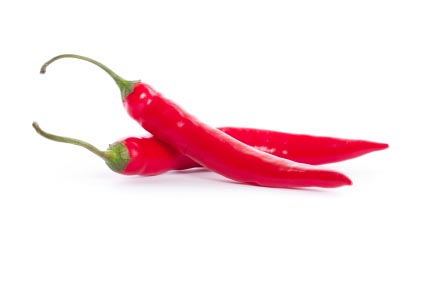
Cayenne is obtained from one of various species of chili peppers cultivated from Capsicum annuum. A member of the nightshade family, cayenne is a botanical cousin to eggplant, tomato and common bell pepper. The spice, which consists of dried and ground cayenne pepper flesh and rind, contains various compounds collectively referred to as capsaicinoids. One of these is capsaicin, a compound with the unique characteristic of producing a burning or strong tingling sensation as soon as it comes in contact with your skin.
Benefits
With repeated exposure to capsaicin, the sensation turns from painful to pain-relieving. This happens because capsaicin competes with a protein called transient receptor potential cation channel subfamily V member 1 (TRPV1, for short) at certain neural receptor sites. This causes a decreased availability of a neurotransmitting chemical called substance P, which would otherwise send a message to the central nervous system that a painful event is occurring. Instead, the opposite takes place, and the brain/body perceives the absence of pain.
Topical creams and ointments that contain capsaicin are used to ease muscle and nerve pain associated with arthritis, fibromyalgia, diabetic neuropathy, shingles and other conditions. Currently, internal use of this compound is being studied as a potential therapy for migraine headaches.
Culinary Uses
In the kitchen, add cayenne to vinegars, sauces and marinades. Try adding a dash to mayonnaise for a zesty sandwich spread. And what would Buffalo wings be without cayenne-fortified hot sauce?
Turmeric
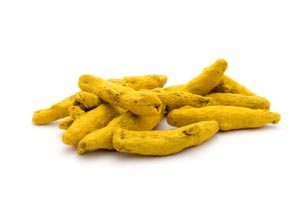
Turmeric is the ground root of Curcuma longa, a relative to ginger also known as Indian saffron. The spice is featured in Asian cuisine, particularly Thai, Indian and Persian foods. Not only does turmeric lend spectacular golden color and a warm pungent flavor to curry, it also enhances the color and flavor of baked goods, butter, cheese, mustard, orange juice, gelatin, ice cream and yogurt, although it is more likely to be listed among the ingredients as Natural Yellow No. 3.
Benefits
Turmeric contains a plant phenol known as curcumin, which is being investigated as a possible deterrent to gastrointestinal disorders and Alzheimer’s disease. Studies show that curcumin exhibits antioxidant qualities as well as anti-inflammatory activity. In terms of the latter, the spice appears to lower the production of leukotrienes, immune system chemicals that are responsible for causing pain and swelling in injured tissue. This happens because curcumin prevents the enzymes COX, COX-2, and 5-LOX from converting into prostaglandins and thromboxanes, events that would otherwise lead to the synthesis of leukotrienes.
Culinary Uses
Add to soups, stews and curries. Turmeric combines well with ginger and is an economical substitute for saffron.
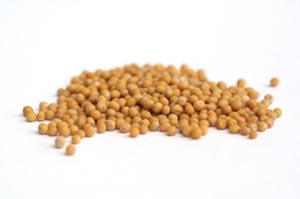
Mustard Seed
Mustard is a member of the flowering family of plants known as Brassicaceae, also commonly called the cabbage family. It contains more than 3,000 individual species, including broccoli, turnip, radish and, of course, mustard. The greens of the mustard plant are eaten raw or cooked as a vegetable, while the seeds are collected and used whole or ground as a spice.
Benefits
The same spice that gives deviled eggs and potato salad “oomph” may also help to prevent certain cancers. Clinical research is still preliminary, but there is evidence that an enzyme in mustard called myrosinase reacts with a type of sugar compound called sinigrin, which is widely distributed in plants in the Brassica genus. The result is allyl isothiocyanate, a sulfurous compound that gives mustard seed “heat.” This substance also interrupts either the G1 or the G2/M cell cycle phase in human cervical, prostate, colon and bladder cancer cells, in effect causing them to die before they can hit a growth spurt. And remember that protein called TRPV1? Mustard seed compounds close off that channel to sensory pain too.
Culinary Uses
Mustard seed is a “must” ingredient in pickling spice mixtures. Combining the crushed seed with vinegar yields the condiment commonly known as “mustard.” Add to vinegars, marinades, brine, barbeque sauces and salad dressings.
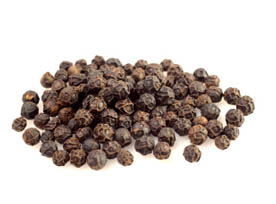
Black Pepper
Ground pepper is made from the dried drupes, or peppercorns, of Piper nigrum, which is native to and cultivated throughout tropical Asia and the Caribbean. The peppercorns may be black, green, red or white depending on the stage of maturity when harvested.
Benefits
The companion to your table salt contains a bunch of biologically active chemicals, but the most noteworthy is an alkaloid called piperine. In addition to demonstrating antimicrobial properties, piperine increases the rate in which fats are broken down in the liver. It also increases gastric secretions, and therefore improves digestion. In fact, black pepper has been used in traditional Chinese and Indian Ayurvedic medicine for hundreds of years to counter nausea, bloating, flatulence and other gastrointestinal complaints.
Culinary Uses
Salt and pepper are used together to season all sorts of raw and cooked foods. Black pepper also brings out the flavor of most cheeses.
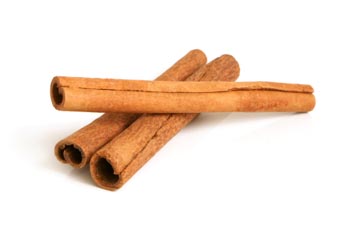
Cinnamon
“True” cinnamon comes from the bark of a small tree designated as Ceylon cinnamon. The species is so-named because it is native to Sri Lanka, which was formerly known as Ceylon.
Benefits
This ancient spice contains water-based compounds called proanthocyanidins that stimulate insulin receptors in cell membranes and improve glucose uptake. In other words, cinnamon improves insulin resistance associated with diabetes type II. In addition to decreasing blood sugar levels, studies indicate that cinnamon may also reduce triglyceride levels. Scientists are also studying another cinnamon compound dubbed “CEppt,” which seems to deter the development of Alzheimer’s disease in mice.
Culinary Uses
Use whole sticks in hot beverages. Add ground cinnamon to baked goods, pancakes, hot cereals and applesauce. A dash of ground cinnamon is also delicious on roasted vegetables and baked fruits, or rubbed onto chicken or pork before roasting or grilling.